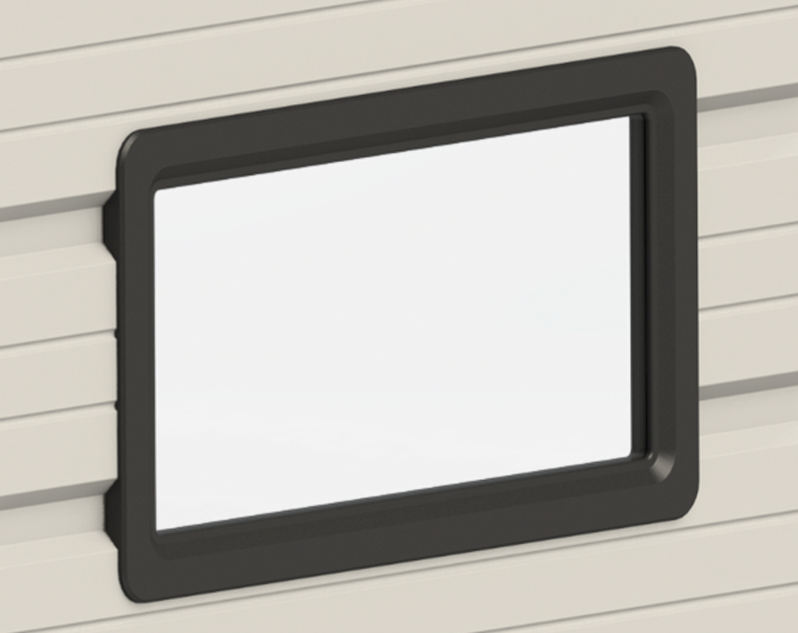How to Create an Energy-Efficient Garage
Posted by Action Direct on 2nd Oct 2025
You don’t want to waste money heating or cooling the outdoors, but if your garage has gaps, leaks, or poorly sealed doors, then you might be doing just that. A few strategic upgrades and smart sealing techniques can transform your garage into a more energy-efficient space. With decades of experience, Action Direct has the best practices and product solutions to seal, insulate, and optimize your garage.
Why an Energy-Efficient Garage Matters
Even when your garage door is closed, outside air can seep in through the bottom edge, along the sides, around windows, and between door sections. If you’ve ever felt a cold draft coming from the bottom of a closed door or window, you’ve experienced this firsthand.
Because most garages don’t have heating or AC, extreme outdoor temperatures often leak into the house, forcing your HVAC system to work harder, and driving up energy bills. By insulating and weather sealing your garage, you can improve comfort and reduce wasted energy.
Sealing Your Garage for Better Efficiency
Sealing your garage blocks outside air from coming in. Depending on your budget, there are simple DIY fixes and more advanced options available.
Garage Door Upgrades
The garage door itself is a major source of air leakage. If your current door isn’t insulated, you can retrofit panels with insulation kits or upgrade to an insulated door with polyurethane or polystyrene cores. These options help regulate temperatures year-round. But insulation alone won’t solve the problem – you also need reliable garage door weather seals.
Garage Door Weather Seals and Thresholds
The bottom of your garage door is the most common entry point for air, dirt, and water. A quality garage door bottom seal creates a tight barrier against the floor, protecting against temperature changes. On uneven concrete, pairing it with a protective threshold will block elements from seeping through the natural spaces between a door bottom seal and the ground.
Sealing isn't just for the bottom. Garage door brush seals are easy to install and protect the sides and top of your garage door. Their flexible bristles adapt to uneven gaps, stopping drafts, debris, and pests in all weather conditions. If you feel a draft through the brush or see liquid coming through following rain, then it’s time to replace your brush seal.
A fully sealed garage uses a combination of bottom seals, side and top seals, thresholds, and brush seals. Together, these solutions form a continuous garage door seal system that keeps your space more comfortable and energy efficient.

Wall and Ceiling Insulation for Comfort
Weather seals block drafts, but wall and ceiling insulation helps regulate temperatures long-term. If your garage has drywall, insulation may need to be professionally blown in. If your garage walls are unfinished, you can add batt insulation or form board yourself. For ceilings beneath living spaces, insulation is especially important to keep upstairs rooms comfortable.
Upgraded Garage Door Window Kits
Windows add light to your garage but can also leak air. To check for window leaks, wave a piece of tissue around the frame and watch for fluttering. Seal with silicone or acrylic caulk. Silicone is flexible in the cold; acrylic holds up to sunlight. For a long-term solution, consider upgrading your window with a commercial garage door window kit with weather sealing that is designed for optimal weather resistance.

Air Sealing the Garage Shell
Don't stop at the door and windows – check the entire garage for gaps. Seal cracks around framing joins, caulk near outlets, and install foam gaskets behind switch plates. These small but important fixes improve energy efficiency by preventing conditioned air from escaping.
Heat Management and Ventilation
Weather sealing is the priority, but ventilation is also important. In hot climates and summer seasons, passive vents or roof turbines can help move hot air out of the garage without using electricity. In small, insulated garages, an AC unit or fan can provide comfort – just ensure your weatherstripping and insulation are in place so that cooled air isn’t wasted.
Solar Panels Add Long-Term Savings
If you want to take efficiency to the next level, consider adding solar panels to your garage. With a suitable roof, pairing solar panels with a well-sealed and insulated garage ensures that the energy you generate is used efficiently, rather than wasted through gaps and poor sealing. Installing solar panels is a higher upfront cost, but they’re relatively easy to set up and reduce long-term energy bills.
Maintenance and Care
Energy efficiency isn’t just about installation – it’s about upkeep. Regularly inspect your garage door weather seals, thresholds, and brush seals for signs of cracking, hardening, or gaps. Action Direct carries thousands of hard-to-find replacement parts to keep everything running smoothly.
Lubricate door rollers and hinges for smooth operation and check your opener for efficiency. For added peace of mind, smart Wi-Fi devices let you close your garage remotely if it’s accidentally left open.
Make Your Garage Work for You
A well-sealed, properly insulated garage saves energy, improves comfort, and adds value to your home. With the right combination of garage door bottom seals, thresholds, brush seals, and window kits, you can transform your garage into a reliable barrier against the elements.
